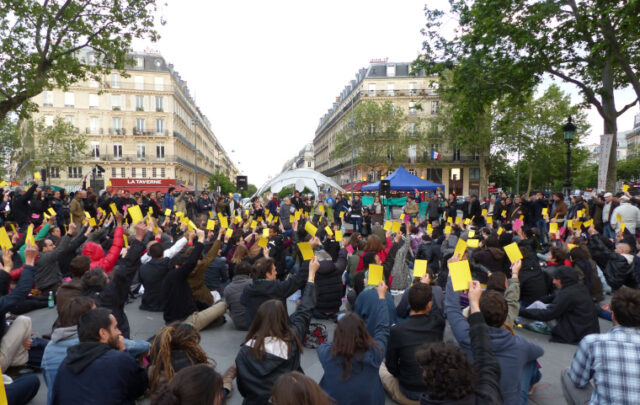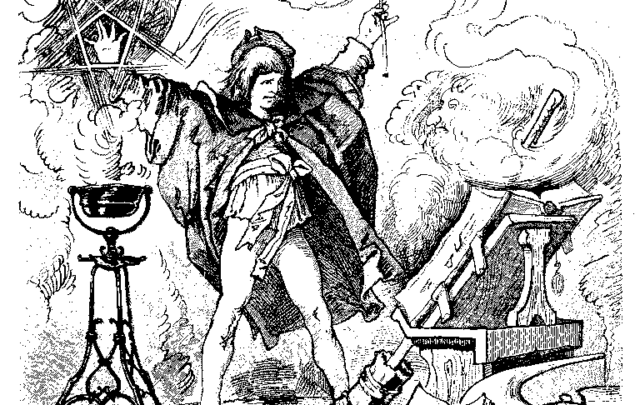Slavic Village Development knew it had a problem.
The nonprofit community development corporation (CDC) promotes local investment and revitalization in the Broadway–Slavic Village neighborhood of southeast Cleveland, Ohio, and serves as a hub to connect residents to each other and to needed services. In 2016, Slavic Village Development (SVD) had updated its strategic plan, and its staff had made a concerted effort to solicit broad input from the working-class community. They used a wide range of common public participation tools, including, according to the plan, “a combination of individual interviews, thematic focus groups, a large community meeting, and a community-wide survey distributed both in print and on-line.”
And yet in reviewing this process, it was abundantly clear that the participants were not reflective of the neighborhood, which is roughly 55% Black, 40% white, and 5% Latino. The strategic planning process had drawn only about 15% non-white representation. This prompted SVD staff, according to Executive Director Chris Alvarado, to ask, “What are we doing wrong, and what can we do completely differently to change this?”
Finding a way to engage the whole community was important in Slavic Village, a neighborhood which has in some respects walked a tightrope through the difficult history of demographic and social change in Cleveland. First settled in 1814 as Newburgh Township, the area became a quintessential Rust Belt neighborhood in the 20th century. It was home to industrial businesses and large communities of Polish and Czech immigrants, inspiring the name change to “Slavic Village” as a marketing push in the 1970s. But post-industrial decline and white flight to the suburbs took their toll, and by the 1980s the neighborhood was in rapid decline. Yet Slavic Village has remained more racially integrated than much of East Cleveland—there are white and black residents on nearly every block—and retains a level of community engagement that inspires longtime resident Charles Gliha to call it the “richest poor neighborhood” in Cleveland, which in turn is America’s poorest large city.
The decline of the Rust Belt has been a one-two punch for neighborhoods like Slavic Village, where growing poverty, crime, and vacancy have coincided with the loss or weakening of civic institutions that used to be the focus of community engagement—things like unions, churches, Rotary Clubs, and hyper-local newspapers. This void leaves isolated residents who struggle to get connected to social support networks or services. Slavic Village hit its low point with the 2007 housing market collapse: the neighborhood was an epicenter of the U.S. foreclosure crisis, with its encompassing ZIP code recording more foreclosures in one quarter of 2007 than any other ZIP code in the nation. That year, Cleveland Magazine asked, “Can Anyone Save Slavic Village?”
The answer is, optimistically, yes. Since then, the neighborhood has seen investment in residential projects, including many home rehabs with the assistance of SVD, as well as new public spaces, transit projects, and a bike path. But Slavic Village remains a neighborhood with a lot of poverty and isolation, and the problems that accompany those things.
Looking for a way to retool, broaden, and deepen their engagement with residents, SVD staff discovered the EcoDistrict certification process, which originated in Seattle. It’s a model for planning rooted in three core principles: equity, resilience, and climate protection. SVD had already been working with the Kresge Foundation on climate work, and decided to pursue EcoDistrict certification and use it as the impetus to pioneer a new model of community engagement. The Community Stewards program was born.
Empowering Neighbors to Help Each Other
In October of 2019, SVD recruited its first cohort of 22 Community Stewards: a group of Slavic Village residents representing the full spectrum of the neighborhood’s age, racial, and geographic diversity. Stewards receive a stipend of $1000 per year for the time they devote to the program. The stewards receive extensive training, what Alvarado describes as “almost a college curriculum that we put together.” The training includes, among other things, a leadership development course through the Cleveland Foundation’s Neighbor Up program, a two-day program from the Racial Equity Institute, and trauma training provided by MetroHealth. “We’re not expecting them to be professionals in everything,” says SVD’s Director of Community Building, Susan Gordon, “but just to kind of ease their comfort as they’re out and about in the community.”
The goal is to ultimately reach 200 stewards, and to have them, not SVD staff, lead SVD’s planning and outreach efforts. This allows the organization to reach community members through their neighbors and colleagues with whom they have authentic connections, not just through the best efforts of a staff that can’t be everywhere or do everything.
To recruit the first class of 22, SVD staff worked from a list of people their office had had face-to-face contact with, such as the head of a block club, a new homeowner, or a participant in youth initiatives such as a park cleanup. They literally pinpointed invitees on a huge map to ensure geographic diversity, and invited 50 to apply, of whom 22 were chosen. Of the initial 22, twelve were Black, ten were white, and their ages ranged from 18 to mid-70s.
Partway into the first year of the Community Stewards program, the COVID-19 pandemic arrived. This derailed some of SVD’s plans to have stewards be a regular presence at community events and block club meetings. But the pandemic also became the first test of the program’s value, and it proved extremely useful in keeping SVD connected to a community suddenly seeing a lot less of each other face-to-face.
A handful of stewards would pick up food from a settlement house and deliver it to seniors who were no longer able to attend meals in-house. When CARES Act funding became available for rental assistance, stewards helped spread the word and facilitated 250 applications from Slavic Village residents. (Unfortunately, many were unable to get funds because they narrowly missed income requirements or, much more concerningly, the properties they were renting had code violations.) More recently, SVD has partnered with MetroHealth to do vaccine outreach.
When University Settlement received funding to do door-to-door trauma outreach, they tapped into the stewards, ultimately sending them out 16 times over 8 weeks (for additional pay) to give out masks and hand sanitizer and simply ask, “How’s it going?” According to SVD’s Gordon, “oftentimes that opens up additional issues: ‘I’m struggling with my rent.’ ‘There’s this tree that’s about to fall.’”
The steward program is also influencing Slavic Village’s voice in City Hall. The neighborhood touches four wards, and all four associated council members have been at the table with SVD stewards. This fosters bottom-up engagement that gives voice to the immediate needs of residents. A couple of the stewards, according to Gordon, will now “see a vacant and vandalized house and just email council directly, copying our staff. I think they’re learning the ropes of City Hall.” Seven different candidates for mayor will participate in an upcoming candidate forum led by several stewards.
Alvarado, who calls himself a “recovering urban planner,” says the program entails a relinquishing of control by SVD as an organization. Planners are good at paying lip service to bottom-up engagement, he says, through tools like charrettes. But this is authentically community led in a different way. The stewards “will say things we wouldn’t say. They’re gonna do things that aren’t completely in line with what we as an organization do. They’re tweaking the noses of our electeds, who let me know. But if you want to build civic engagement again, this is the only way.”
Drawing on Residents’ Passions
Many community stewards bring their own prior connections and passions to the endeavor. Charles Gliha, whom I quoted earlier, has lived in Slavic Village his whole life—he’s 67—and attributes pride of place to being the kind of old-timer who can “remember what was in that vacant store.” Gliha, who was “volunteered” for the stewards program, is passionate about public space and events, and helps run the 17-year-old Iron Ward Festival, a Monday night outdoor concert series in a shady local park.
“You know you’re having a good night when half the crowd is white, half black, half old, half young, you’ve got millionaires sitting next to people with no money, and you feel like you’re in the center of the world,” says Gliha. “It’s a little conspiracy to make each other happy.”
Gordon says one goal over time is to shape the stewards program into more specialties, and let participants really take ownership of something they’re driven by. One team might work on educational outcomes and digital access for students (the pandemic closed Cleveland Public Schools for an entire year). Another team might address litter and the care of park and street vegetation. SVD has worked to fund micro-grants to stewards to pursue passion projects.
The program serves a professional development function for its participants that is meant to pay dividends beyond their time as stewards, helping them obtain valuable skills and learn to be civically engaged, involved, and empowered. Gordon hopes this leads alumni of the program to sit on nonprofit boards or serve the community in their own professional capacities, or simply contributes to successes in their own professional lives.
Challenges Ahead
The biggest drawback to the Community Stewards model is that it is undoubtedly a resource-intensive way to do engagement, requiring an ongoing commitment of staff time as well as multiple outside grants to support the training. The program is funded by the Kresge Foundation, Cleveland Foundation, Cleveland Neighborhood Progress, and ArcelorMittal, a local steel company. In some ways, Cleveland is the perfect place to pilot a program like this, as the city has a robust and multifaceted nonprofit sector (in part due to its pervasive poverty and the limited capacity of local government itself).
Gordon says that there are no shortcuts around the amount of work involved in this model of community engagement. “You’re building relationships, building trust. With that comes great things, but also comes a lot of heartache. They’re now calling you for things, and some of these folks’ stories are just heart wrenching. You’re trying to help them help themselves.”
Both Gordon, the Community Building Director, and Gliha, the community steward and longtime local advocate, agree that the training program is one piece that ought to continue to evolve. Gordon, for her part, suggests that the training could be spaced out instead of piled on at once, with the first quarter of the steward year devoted more to building trusting relationships.
Gliha suggests that a stronger emphasis on tools for collective action would help: how to organize and put on a public event, execute a petition drive, or contact elected officials. At the same time, he recognizes the need for newer forms of training that emphasize things such as implicit racial bias. Historically, he says, the “activist core” of the neighborhood was so well organized and tight-knit that it deterred others from getting civically involved. “When the neighborhood integrated racially, the Black population felt like the outside looking in.”
Gliha credits SVD’s efforts including the steward program with beginning to address this participation gap. ”It seems to be working. You see new faces you haven’t even seen before who are volunteers. Nobody is forcing them to do anything, but they bring a new perspective on every problem we have.”
Teaser photo credit: Shrine Church of St. Stanislaus in Slavic Village. By stu_spivack – originally posted to Flickr as Shrine Church of St Stanislaus, CC BY-SA 2.0, https://commons.wikimedia.org/w/index.php?curid=4183061





